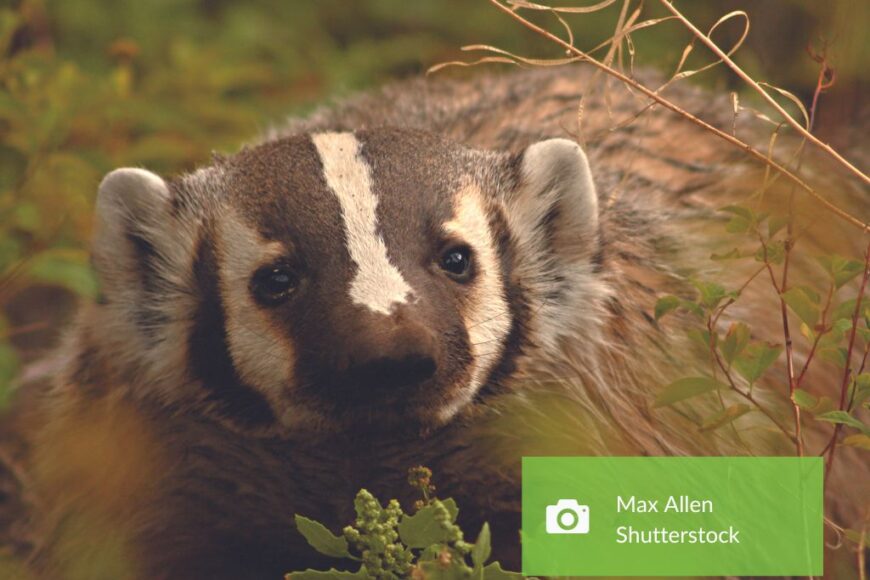Dawson Trail Dispatch, written by Norm Gregoire, November 2023
Page 25 https://issuu.com/dispatch222/docs/dawson_trail_dispatch_november_2023
In southeastern Manitoba, we have such a wide variety of wildlife that it would be impossible to see every species in one lifetime. For someone like me who has loved wildlife since childhood, it is a goal to be able to witness as many of the incredible species as possible that we live among. One species that has eluded me so far is the American badger. As the Community Liaison for Species at Risk, I feel like the wait to see this iconic Prairie species is long overdue!
The Prairie subspecies of American badger is designated as one of Special Concern under the federal Species at Risk Act. It does not mean that the species is disappearing, but recognizes that overall, it that may become threatened or endangered because of a combination of biological characteristics and identified threats. In Ontario and British Columbia, those subspecies are, indeed, endangered because of habitat loss and high mortalities.
The American badger is a member of the weasel family. Unlike its slim cousin, the ermine, it is short and stocky, weighing four to twelve kilograms, with an overall flat appearance. They are equipped with powerful front legs and claws that may reach four centimetres, making them excellent diggers. Due to their greyish colouring and stripped face, the American badger may be mistaken for a striped skunk or even a common raccoon. A good trick to help distinguish a quick sighting of these three species is where they were seen. If it is in a more urban setting, then chances are it is not an American badger, as they are much more adapted for a rural habitat.
American badgers are generally found in unforested grasslands, shrublands, pastures, and fields, while trying to avoid cultivated land. A key feature of the habitat is loamy soil, which can support their underground den (also called a sett). Setts can be more than three meters deep and more than ten meters long. A male American badger may have a home range of over sixty square kilometres.
During this time of year, the American badger will be getting ready for winter. They are a species that undergoes a process called torpor during the coldest months. Topor is not a true hibernation. They are mostly dormant, but their basic body functions (heart rate, core body temperatures, etc.) have not dropped as low as a true hibernator. They will occasionally wake, and in the case of female American badgers, take this opportunity to give birth to their young, called kits.
So, it looks like my time to see an American badger this year is slowly running out, but there is always hope for next year. As American badgers enjoy their winter dormancy, we two-legged members of the tall-grass prairie natural area get to enjoy the winter months, and there is a lot to look forward to.
Community Celebration Event!
All are welcome to join the Shared Legacy Partnership for an open house at the Weston Family Tallgrass Prairie Interpretive Centre near the town of Stuartburn on Road 32 East. Doors are open from 6:30 pm until 8:00 pm. Tour the centre at your own pace and meet members of the Shared Legacy Partnership representing the Rural Municipality of Stuartburn, Nature Conservancy of Canada, Sunrise Corner Economic Development, and the Province of Manitoba. Learn what is being done to raise awareness about the tall-grass prairie and the incredible species that are found throughout. This event is free of charge, and registration is not needed. For more information, contact info@sharedlegacymb.ca or check out the Shared Legacy website at www.sharedlegacymb.ca.

